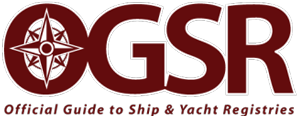Dominica

Located between the islands of Martinique and Guadeloupe, Dominica is well deserving of its status as the Nature Island of the Caribbean, with lush tropical rain forests and 365 rivers coursing over 290 square miles of breathtaking terrain. An environmental mindset (The national motto is “Après Bondieu, C’est la Terre,” “After God, the Earth”) has preserved the beauty of this island, which is a popular ecotourism destination that remains unspoiled by the commercialism that has overrun other Caribbean countries. In the past decade, tourist arrivals have increased steadily at a rate of 12 percent per year.
Twenty-nine miles long and sixteen miles across at its widest point, the island is home to 89,000 residents, including 3,000 Carib Indians, descendants of the island’s original inhabitants. European eyes first sighted Dominica (pronounced “Doe-mee-NEE-kah”) on a Sunday in 1493. Later, the English and the French alternately owned the island.
A British colony until 1967, Dominica was granted full independence November 3, 1978. As a commonwealth, it operates on a parliamentary system, with the prime minister, chosen with the majority party, as chief executive; the president serves as ceremonial head of state. Its capital is the port city of Roseau; Portsmouth is a second active port. Agriculture is the mainstay of the Dominica economy, with bananas as the chief crop, along with citrus, mangoes, root crops, and coconuts. Its manufacturing industry produces soap, coconut oil, copra, furniture, cement blocks, and shoes. Major trading partners are the United Kingdom, the United States, the Netherlands, and Canada.
The commonwealth’s Ministry of Finance operates its International Ship Registry and an International Business Unit charged with diversifying the economy, expanding the economic base, and generating employment. Dominica’s political stability, lack of corporate or capital gains taxes, open trade and payments system, and superior communications systems are among its most appealing draws for offshore companies.
The International Maritime Act of 2000 governs the shipping industry. The Maritime Administration works in close partnership with Dominica Maritime Registry Inc. (DMRI) to operate “The Flag of Responsibility.” The Dominica Maritime Administration is the enforcement agency for all matters concerning seaworthiness, safety, and seafarer qualification. Legally bound to make the Dominica shipping registry its sole mission, DMRI is uniquely dedicated to its registrants. DMRI’s senior management has more than 100 years’ combined experience in writing and enforcing international shipping regulations. Its board of quality management advisors-comprising a roster of internationally recognized marine safety and pollution prevention advocates-plays an active daily role in ensuring the Dominica fleet takes proactive, cost-effective compliance measures. Their representation of Dominica registrants at the United Nations International Maritime Organization and other international bodies ensures advocacy of unparalleled influence and stature. Input and advice are encouraged through Dominica Shipowners Association and Registry members are welcome to serve on Dominica delegations. The registry employs advanced communication technology to solicit input and provide timely notice of current, pending, and revised regulatory requirements. Affiliation with distance learning and training programs and plans to establish the Caribbean World Maritime Institute for crew education and training are evidence of further commitment to superior marine safety and pollution prevention standards.
The Registry is operated by the Commonwealth of Dominica and the Commonwealth of Dominica Maritime Registry, Inc. (DMRI), located in Fairhaven, Massachusetts. DMRI is an ISO 9000/2001 Certified Company, another testament to our commitment to quality and our customers.

